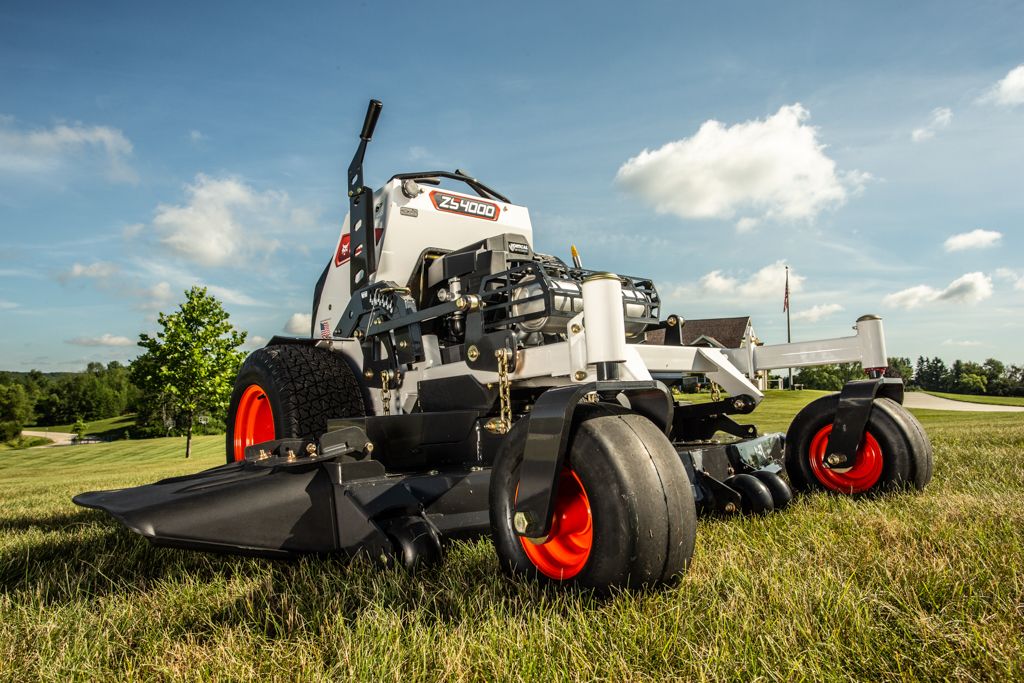Choosing the right size ride on mower

Having the right ride on mower for your property can make quick work of lawn mowing so it’s understandable that one of the top questions we’re asked is “what size ride on mower do I need?” First of all, when we talk ‘size’, we don’t mean the physical bulk of the machine itself, but rather the power of the engine and width of the cutting deck. The ‘right’ size will directly relate to the area you have to mow; the larger it is the more powerful an engine and wider cutting deck you’ll need to handle the job efficiently. Let’s run through what those measurements mean and how much you need for certain sized properties.
Types of ride on mower
Lawn and garden tractor or zero-turn mower? Tractor styles have a steering wheel and are the more traditional type of ride-on mower, while most zero-turns have levers and are fast becoming the mower of choice thanks to their exceptional speed and manoeuvrability.
Cutting deck
The wider the cutting deck, the larger the area of grass you’re cutting at any given time. Deck sizes typically range from 38-42” in residential models up to 72” on commercial ride ons.
Another feature to look for in the cutting deck is the number of blades as this is directly related to how much grass is cut in a single pass.
Engine power
Horsepower is how the power output is measured and accounts for the amount of weight and distance the mower is being moved, and how long it takes to do it. However, horsepower can be very deceiving when comparing different brands of engine, with some rated at gross horsepower, and others at net or ‘Critical’ horsepower, and other variances depending on the rating system used. Click here to read more about this important point.
Engine displacement (the size of the cylinder in the engine) is measured in cubic centimetres (cc); the higher the cc, the more powerful the engine.
Engine torque measures (in foot-pounds/ft-lbs) the force that keeps the mower blades spinning; the higher the torque, the better the cut, especially in tall or thick grass.
A V-twin engine (usually found on larger tractors or zero-turns) provides more power than a single-cylinder engine, as well as reduced vibration for less wear, quieter operation and better comfort. A V-twin engine also lasts a bit longer as it runs cooler and burns fuel cleaner.
Mower size vs property size
Under 1 acre:
If your property is under one acre an entry-level mower will be fine, something with a smaller engine (at the front) on a lighter frame will work great. If you go for a lawn tractor over a zero-turn, you’ll also still need a push mower for getting into the spots the lawn tractor can’t.
DECK SIZE: up to 42”
ENGINE: at least 14 horsepower
1 – 2 acres:
A tougher frame, suspension and engine is needed for more mowing. Some mowers in the mid-range grade also come with the option to attach and tow other features such as a dozer blade, garden plow, trailer or leaf catcher, for example.
DECK SIZE: 42” – 46”
ENGINE: 16+ horsepower
Over 3 acres:
If you have a large property consider a model that has features available even if you don’t want to buy those add-ons right away.
DECK SIZE: at least 48”
ENGINE: 22+ horsepower
Before you buy a ride on mower
Ask friends and neighbours (especially those with a similar property to yours) what they use and how they find it, what they wish was better, etc.
As well as being the right size to tackle the job, it also has to be something you feel comfortable and safe using. If the engine is too small you won’t have good results. If it’s too big and powerful you’ll be riding it around super slow and that’s just as bad. We’d be happy to talk you through your options and arrange a free demo, so get in touch with our team to organise this.
You can also download our free guide on how to choose the right mower and learn more about what you need for your property.